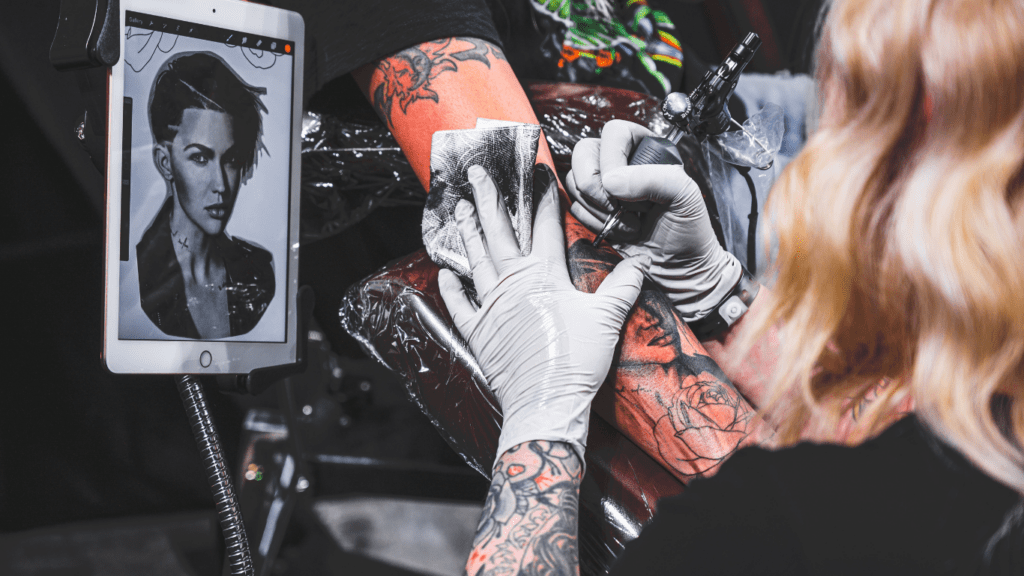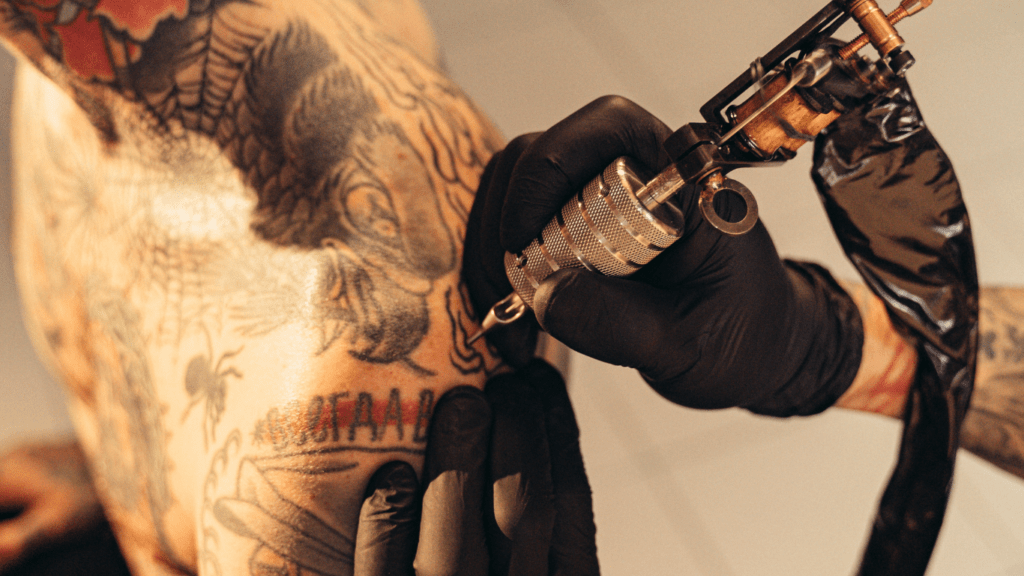The Evolution of Tattooing
Tattooing has undergone significant transformation from its inception to the techniques used today. Let’s examine how ancient practices contrast with modern advances.
Ancient Practices
Early tattoos date back thousands of years. Ancient cultures like Egyptians, Samoans, and Celts used rudimentary tools, such as:
- sharp bones
- sticks, to puncture the skin
- apply natural pigments
In many traditions, tattooing held deep spiritual or social significance. For instance, Polynesian tattoos represented status and identity within their tribes. Similarly, in ancient Egyptian culture, tattoos often symbolized protection and healing.
Modern Advances
Modern tattooing techniques utilize advanced technology and refined methods. Electric tattoo machines, invented in the late 19th century, revolutionized the process. Today’s machines are more efficient, allowing for precision and intricate designs. Moreover, sterile needles and safe, non-toxic inks ensure hygienic practices.
Digital advancements have also impacted the design process, enabling artists to create detailed and customizable templates. Technology and innovation have significantly broadened the scope and artistry of tattoos, moving them from cultural markings to personalized art forms.
Essential Tattooing Techniques
Tattooing is a meticulous art form that requires precision and skill. The primary techniques include outlining, shading, color packing, and layering.
Outlining and Shading
Outlining forms the foundation of any tattoo design. Using a tattoo machine fitted with a liner needle, I create clean, crisp lines to define the design’s shape. Consistency in line width and depth ensures a cohesive look. For example, a dragon tattoo’s scales demand precise outlines to maintain clarity.
Shading adds depth and dimension to the tattoo. By adjusting the needle grouping and using various shading techniques, I can create gradients and shadows. This enhances the realism and complexity of the design. Smooth shading makes portrait tattoos look lifelike, adding subtle contrasts.
Color Packing and Layering
Color packing involves saturating areas with solid color. I use magnum needles, designed for filling large spaces. The key is to deposit pigment evenly without damaging the skin. For instance, vibrant flowers in a sleeve tattoo benefit from thorough color saturation.
Layering builds complex, multi-dimensional artworks. Applying different colors in multiple passes, I can achieve a rich, textured effect. This technique is crucial for detailed designs like biomechanical tattoos, where layers of color and shading bring elements to life.
Key Tools in Tattoo Artistry

Tattoo artists rely on specific tools to create their masterpieces, ensuring precision and safety. Understanding these tools helps appreciate the skill involved in tattooing.
Machines and Needles
Tattoo machines power the art. There are two main types: rotary and coil.
- Rotary machines use an electric motor to move the needle, offering smooth and quiet operation, ideal for both lining and shading.
- Coil machines use electromagnets to drive the needle, providing a distinct buzzing sound and superior control, catering to precise detailing.
- Needles vary based on their function. Lining needles (e.g., 3RL, 5RL) are grouped in tight, round formations to create bold, consistent lines.
- Shading needles (e.g., 7RS, 9MS) spread out in broader configurations to fill and shade areas smoothly.
- Needle groupings like magnums and flats apply colors or shading over larger skin areas, ensuring even application.
Inks and Accessories
Quality inks, essential for vibrant and lasting tattoos, are made from organic or inorganic pigments. Black ink, a tattoo staple, often utilizes carbon-based pigments to achieve deep, striking shades. Colored inks, in a broad spectrum, combine various pigments to ensure safety and skin compatibility.
Accessories enhance the tattooing process. Power supplies regulate machine performance, offering consistent voltage for stable needle movement. Grip tubes, adjustable for comfort, help artists maintain steady control during long sessions.
Ink cups, small and disposable, hold individual colors for easy access and hygiene. Additionally, stencil paper transfers designs to the skin, providing a guiding blueprint for accurate artwork.
Health and Safety in Tattooing
Health and safety standards in tattooing ensure clients and artists are protected from infections and complications. Effective techniques maintain those standards throughout the tattooing process.
Sterilization Methods
Sterilization is essential. I use autoclaves to sterilize reusable tools by exposing them to high-pressure saturated steam at 121 degrees Celsius for 15-20 minutes. This process eliminates all microorganisms. For single-use items like needles and gloves, I ensure they’re disposed of properly after each session. I also clean surfaces with hospital-grade disinfectants, reducing the risk of cross-contamination.
Client Aftercare Guidelines
Offering proper aftercare instructions enhances healing and tattoo longevity. I advise clients to keep the tattoo covered for 2-3 hours post-session. Washing the area gently with antimicrobial soap and lukewarm water is necessary, followed by patting it dry with a clean towel.
I recommend using a thin layer of fragrance-free moisturizer to prevent dryness. Clients should avoid swimming, sun exposure, and picking at scabs to minimize infection risk and ensure optimal healing.


 Harriet Bellvovy, the visionary founder of Innov Art Foundry, has cultivated a platform that seamlessly bridges the traditional and modern aspects of the art world. Under her leadership, Innov Art Foundry has become a hub for the latest art news, keeping enthusiasts and professionals alike informed about significant exhibitions, breakthroughs, and emerging trends. Her commitment to fostering a vibrant art community is evident in the platform's comprehensive coverage, ensuring that artists and art lovers are always at the forefront of the dynamic landscape.
In addition to art news, Harriet Bellvovy has expanded Innov Art Foundry's focus to include art entrepreneurship, providing valuable insights for artists aspiring to turn their creative passions into thriving businesses. Her dedication to exploring diverse forms of artistic expression is further showcased in the platform's deep dive into tattoo art and the transformative role of virtual reality in the art world. Harriet's innovative approach continues to inspire and empower a new generation of artists, making Innov Art Foundry a vital resource in the contemporary art scene.
Harriet Bellvovy, the visionary founder of Innov Art Foundry, has cultivated a platform that seamlessly bridges the traditional and modern aspects of the art world. Under her leadership, Innov Art Foundry has become a hub for the latest art news, keeping enthusiasts and professionals alike informed about significant exhibitions, breakthroughs, and emerging trends. Her commitment to fostering a vibrant art community is evident in the platform's comprehensive coverage, ensuring that artists and art lovers are always at the forefront of the dynamic landscape.
In addition to art news, Harriet Bellvovy has expanded Innov Art Foundry's focus to include art entrepreneurship, providing valuable insights for artists aspiring to turn their creative passions into thriving businesses. Her dedication to exploring diverse forms of artistic expression is further showcased in the platform's deep dive into tattoo art and the transformative role of virtual reality in the art world. Harriet's innovative approach continues to inspire and empower a new generation of artists, making Innov Art Foundry a vital resource in the contemporary art scene.